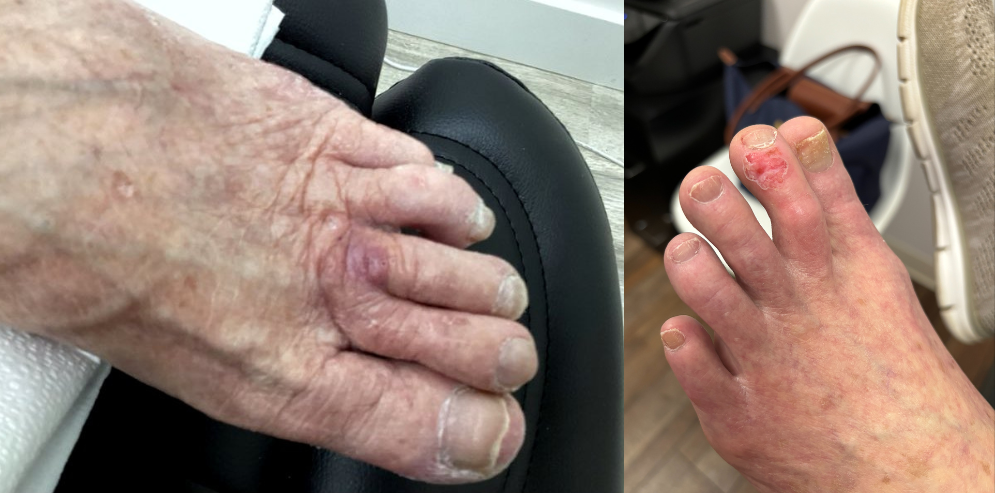
Skin cancer statistics show that early detection can greatly mitigate the risk posed by common and uncommon forms of the disease. Although annual full-body screenings are always preferred, patients who understand how to identify skin cancer are more likely to seek out the help they need. For that reason, health professionals have developed tools and tricks to improve the effectiveness of at-home screenings—and the ABDCE’s of skin cancer are among the most commonly used.
ABCDEs of Skin Cancer Explained
So, what are the ABCDE’s of skin cancer? Each letter stands for a common visual sign associated with one or more forms of the disease:
- Asymmetry
- Border
- Color
- Diameter
- Evolving
If an unexplained growth on your body displays even one of these signs, it’s important to check in with a professional at the earliest opportunity.
What are the 5 warning signs of skin cancer to look for? Before we dive into each of these signs, keep in mind that skin cancer won’t necessarily manifest with these indicators. Certain common forms of skin cancer may take other forms—like a red and scaly patch, just to name one example.
Asymmetry
An area can be described as asymmetrical if cutting it in half would produce two different shapes.
Border
If the border of the growth is uneven or unclearly defined, it is more likely to be skin cancer.
Color
If the area is not colored uniformly, it deserves closer inspection. That’s true whether there’s a gradient in tone, or a portion of the area that’s colored differently from the rest.
Diameter
If a growth measures more than six millimeters from edge-to-edge, the risk of cancer is higher. Don’t have a ruler on hand? Six millimeters is roughly the width of a pencil eraser.
Evolving
An area that is currently changing in size, shape, or color is due for a closer look. Take notes during your regular inspections, and if anything seems different, you’ll have information that you can bring directly to your healthcare provider.
Have You Noticed Any of These Visual Signs?
If you notice any of the visual signs listed above, it’s best to speak with your health care provider as soon as possible. Is skin cancer curable if caught early? According to the Skin Cancer Foundation, early detection saves lives. Once you know what to look for, you become empowered to bring anything out of the ordinary to your dermatologist’s attention, potentially saving your life or avoiding the need for surgery.
General Skin Cancer Symptoms
The American Cancer Society points out the difference between signs and symptoms. A sign of skin cancer can be identified and measured by someone else, such as your dermatologist. A symptom is felt or noticed by the person who has it. Here are some general skin cancer symptoms of cancer to be aware of:
- Pain
- Tingling
- Itchiness
- Tenderness
- Swelling
- Numbness
- The feeling of something “crawling” under the skin
Keep in mind that signs and symptoms can depend on where the cancer is located in the body, how big it is, and how much it’s impacting tissues and organs around it.
Ask Your Provider About Image-Guided SRT
Although Image-Guided SRT is not a treatment for melanoma, common forms of skin cancer—including basal cell skin cancer and squamous cell skin cancer—can now be treated without surgery or risk of surgical scarring. If you’ve recently been diagnosed with skin cancer, talk to your healthcare provider to find out if Image-Guided SRT is right for you. You can also call us at 855-936-4411 to speak with one of our skin cancer information specialists today.








